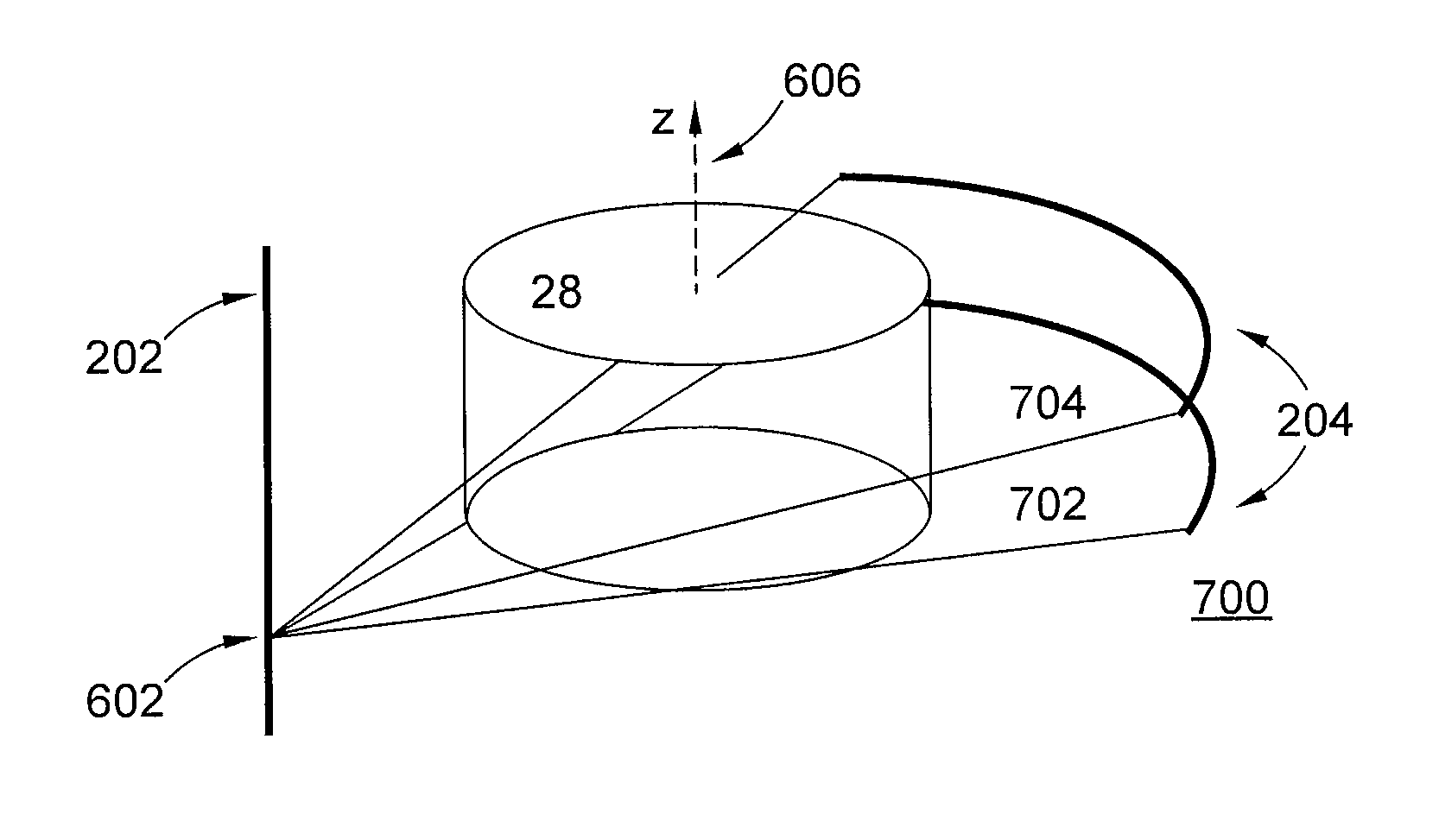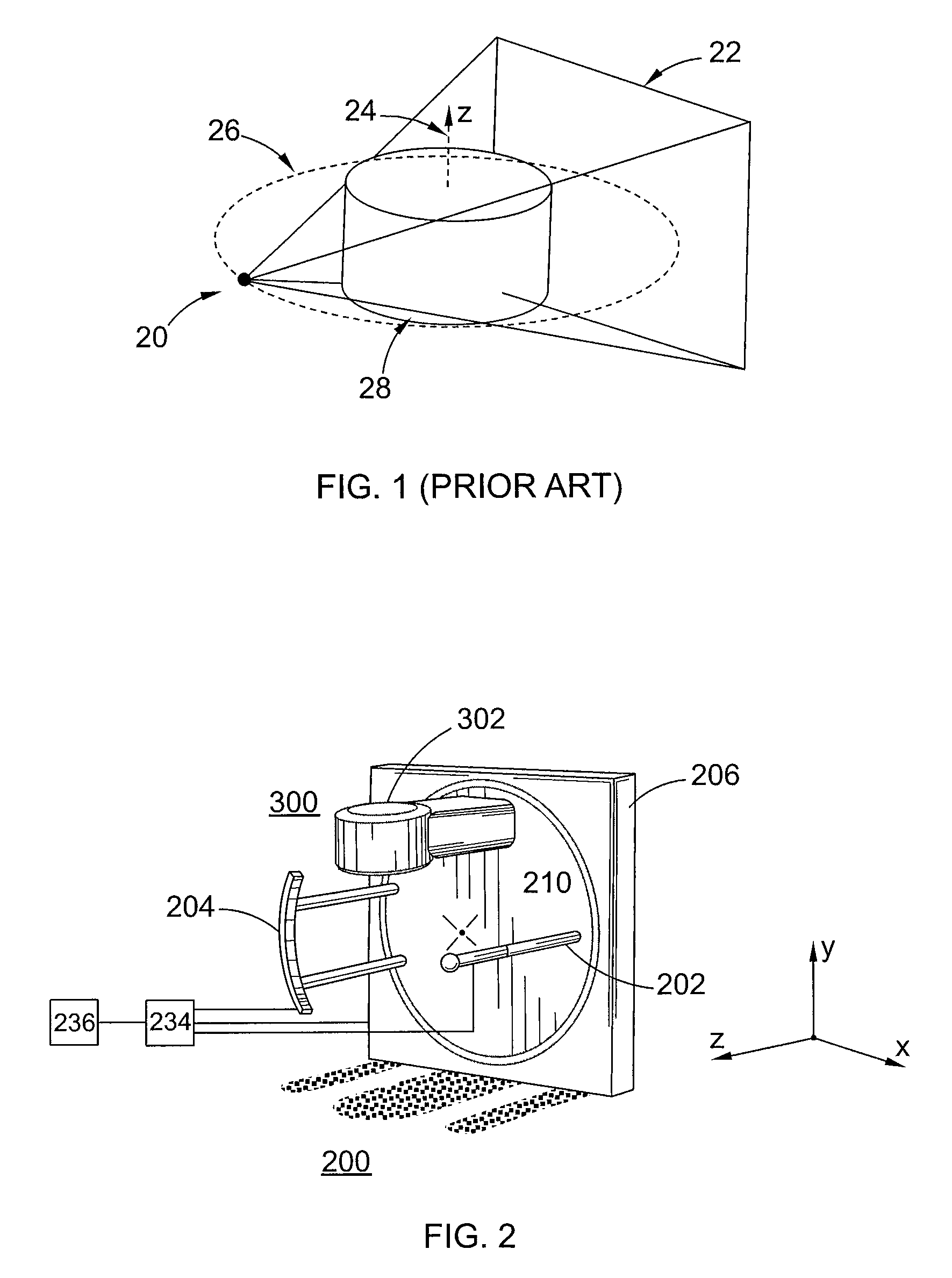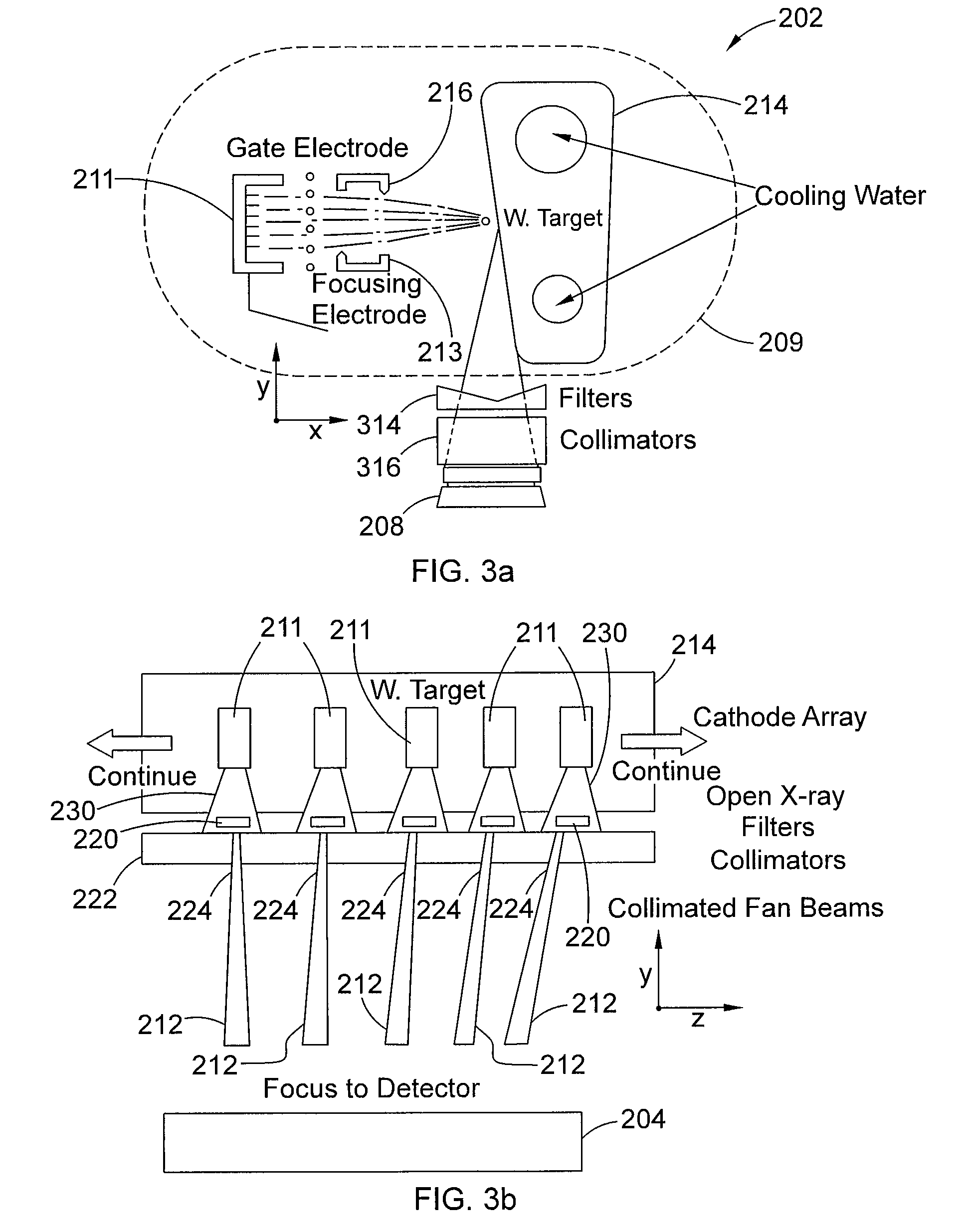Tetrahedron beam computed tomography with multiple detectors and/or source arrays
a computed tomography and tetrahedron beam technology, applied in the field of computed tomography (ct), can solve the problems of reducing image quality, poor low contrast differentiation and noisier images, and inferior performance of discrete x-ray detectors that are used, so as to reduce or eliminate beam divergence, reduce the length of source array, and reduce the length of the source array.
- Summary
- Abstract
- Description
- Claims
- Application Information
AI Technical Summary
Benefits of technology
Problems solved by technology
Method used
Image
Examples
Embodiment Construction
[0044]Referring now to FIGS. 2-12, various imaging systems embodying the principles of the present invention are illustrated, wherein like elements are denoted by like numerals. In particular, FIG. 2 shows an embodiment of a wall-mounted tetrahedron beam computed tomography system 200 and megavoltage portal imaging system 300. The system 200 may be retrofitted onto an existing or new radiation therapy system that includes a separate radiation therapy x-ray source. As shown in FIG. 2, the system 200 includes a separate radiation therapy x-ray source, such as a linear accelerator 302, which is separately mounted to the rotating drum 210. The linear accelerator 302 operates at a power level higher than that of x-ray source 202 so as to allow for treatment of a target volume in a patient lying on movable table (not shown). The table is movable in the x, y and z-directions shown in FIG. 2 via computer 234. The linear accelerator 302 generates a beam of x-rays or particles, such as photon...
PUM
 Login to View More
Login to View More Abstract
Description
Claims
Application Information
 Login to View More
Login to View More - R&D
- Intellectual Property
- Life Sciences
- Materials
- Tech Scout
- Unparalleled Data Quality
- Higher Quality Content
- 60% Fewer Hallucinations
Browse by: Latest US Patents, China's latest patents, Technical Efficacy Thesaurus, Application Domain, Technology Topic, Popular Technical Reports.
© 2025 PatSnap. All rights reserved.Legal|Privacy policy|Modern Slavery Act Transparency Statement|Sitemap|About US| Contact US: help@patsnap.com



